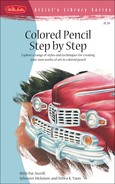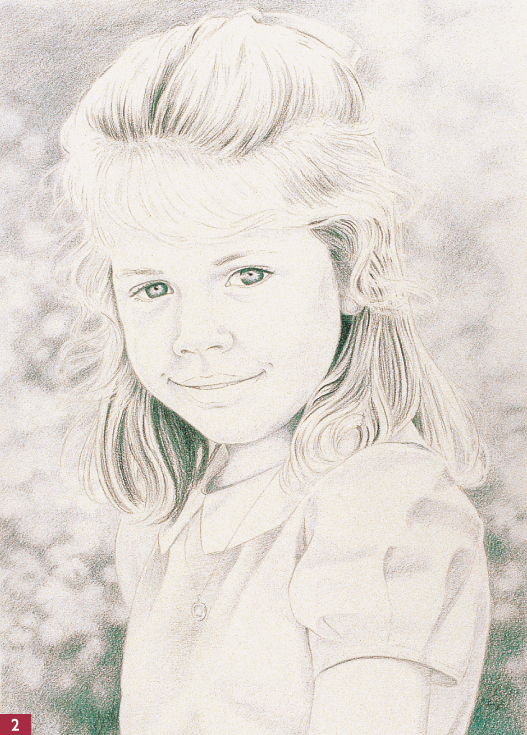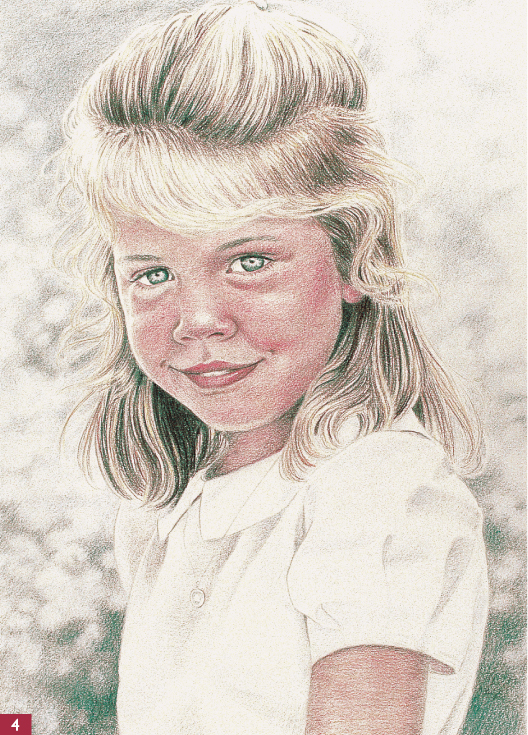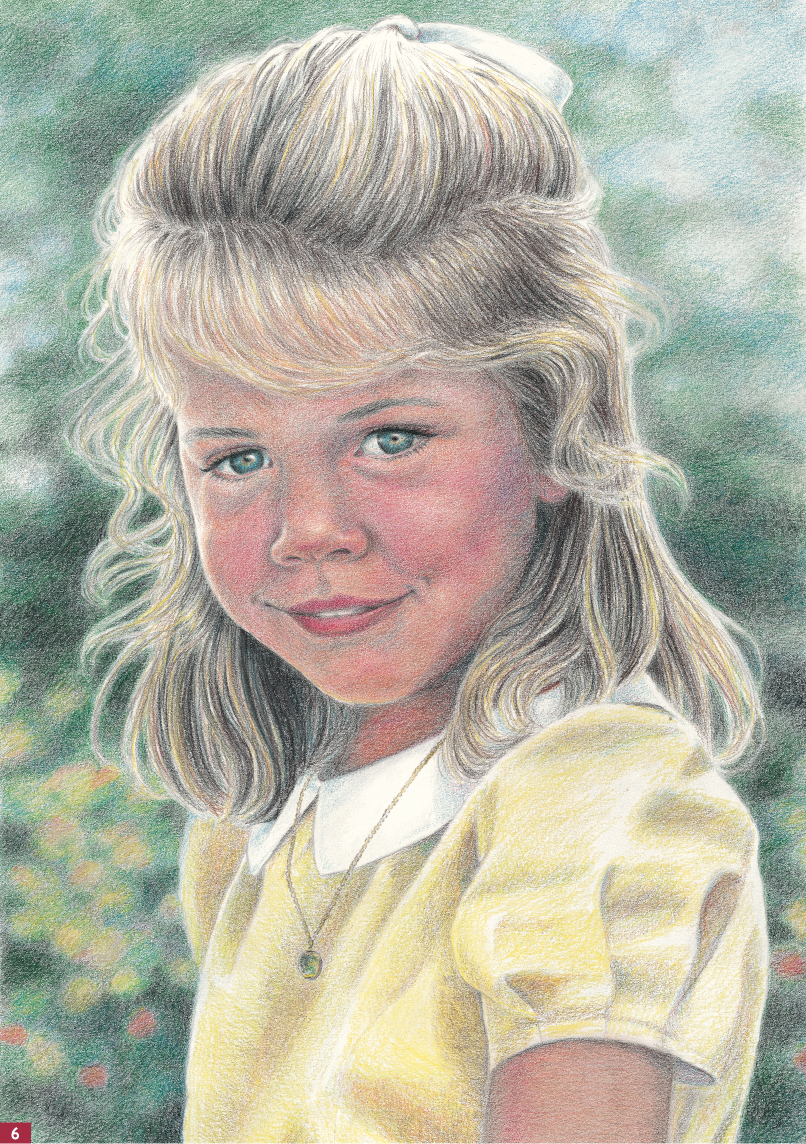Portraits have been extremely popular subjects for centuries; there is nothing quite as exciting as capturing a human personality on paper. You can accurately depict the likeness of a person by carefully observing and copying the shapes, values, and colors you see. Begin by dividing the face into thirds, and note where the features fall in relation to the whole face and to one another (the proportions). Then, as you do when drawing animals, look for what makes each person unique. In this portrait of Liza, Debra Yaun communicates the girl’s charming innocence by paying close attention to proportion and detail—including her wide smile, wispy curls, and adorable dimples.

Drawing Children When drawing a portrait, it’s important to work out the details and proportions in a sketch before you begin applying color. For example, in this photo reference, you can see that the halfway mark between the top of the head and the chin is just about at eye level. When the sketch is complete, I transfer the drawing of Liza to my art paper.
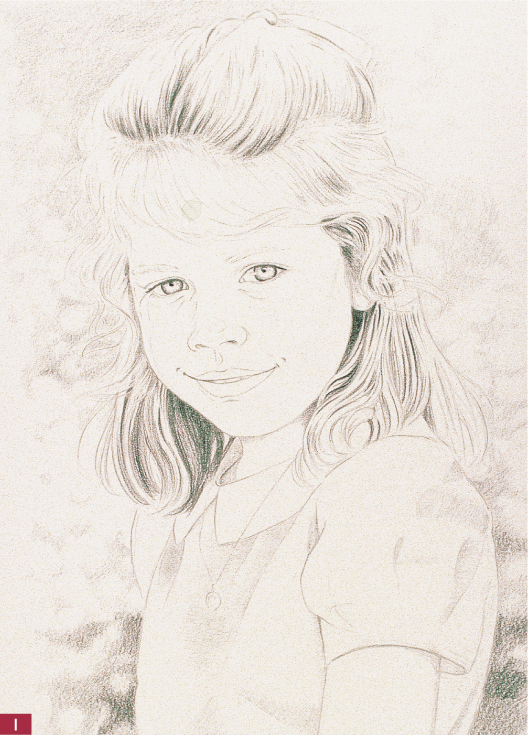
Step One Using light, short strokes of black, I begin by placing some shadows on the dress. I create a loose indication of flowers in the background and a dark, leafy area near the bottom. Next I apply black in a circular motion to smooth out the background, drawing around the lighter areas. Then I indicate the shadows in the hair with soft black lines that follow the direction the hair curls.
Step Two I lightly indicate the eyebrows with black, stroking in the direction they grow. I lightly apply cobalt blue to the shadows on the face and arm, and then I layer blue over the black lines in the hair to soften them and make them less stark. I also add a little blue to the white of the eyes and under the eyelashes to give the eyes some dimension. Then I apply blue over the shadows on the dress and add a little more black in the background. I give most of the background a light layer of blue, pressing harder over the black areas that I want to appear a bit darker. I leave the wisps of hair along the sides of the face white by coloring around them with the background colors. Then I use a blending stump to blend the blue into the background.

Step Three I layer dark umber over the black lines in the hair, pressing firmly in the dark areas. Then I lightly apply dark umber to the rest of the hair, leaving the highlights white. I softly add dark umber to the crease of the eyelids, the corners of the mouth, and the dimples that make her expression so unique. I also apply a light layer of dark umber to the lips, leaving the highlight on the bottom lip white. Next I detail the eyelashes with dark umber, starting at the lid and curving them out. Then I make the eyebrows a little darker with black.
Step Four To establish a base for the skin tones, I add a light, smooth layer of magenta to the face and arm, leaving the highlighted edge of the cheek white. Then I use a blending stump on the skin tones to lightly blend the colors. Where the face appears too red, I pull some pigment off with a kneaded eraser. I apply a little magenta to the inner corner of each eye, and then I add a light layer of canary yellow over the hair and face. I darken the hair with a little more dark umber and lightly indicate a few freckles on the nose and cheeks.
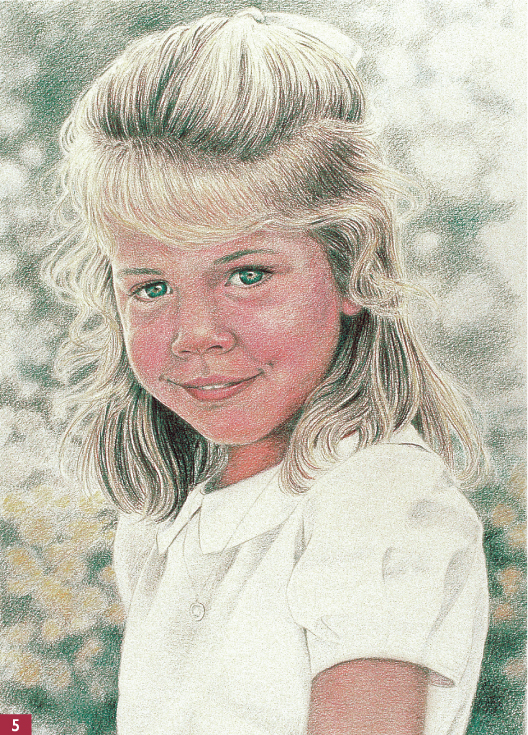
Step Five Next I apply a light layer of peach in the whites of the eyes, leaving a small white highlight in the center of each pupil. I also add a light layer of peach to the teeth (since they are in shadow and shouldn’t be pure white) and most of the face, leaving highlights on the nose and bottom lip. Next I softly apply peach to the highlighted edge of the cheek, smoothing the transition from color to white. In the background, I add areas of dark umber, dark green, and black to the smooth, circular shapes. Then I apply green over the black in the top-left and bottom-right corners. I add a little more brown to the arm and sleeve to create a sense of depth and realism.
Step Six I add magenta to the hair and then layer white over the darks. I use dark umber to draw the necklace and locket, then add canary yellow. I apply dark green and magenta to the background, then use cobalt blue to soften the colors. I lightly layer magenta and then dark umber over the blue shadows on the dress and blend with a stump. Then I apply canary yellow over the dress, leaving highlights as needed. I lightly layer blue along the right side of the face, along the hairline and cheek, to round out the face. Finally I soften some of the wisps of hair and darken the eyelashes and eyebrows.
